Let’s face it! 8 out of 10 articles on ‘How to recover an abandoned Cart’ have only one key takeaway: email marketing. And they have nothing new to offer. Here’s a screenshot of Google Search for evidence.

What most of them fail to cover is that recovering a stranded online shopping cart is not a “Step 1: Send a Cart Abandonment Email” process. It requires a well-thought-out and data driven approach to nudge a customer and lure him/her back to the cart. Besides, it needs to be done through the right channel at the right time. Of course Email is crucial but using a multiple and cross-channel technique can yield better results.
ALSO READ: Confessions of a Customer: “Why I usually abandon my cart”

Let’s take a look at this customer journey to understand how a cross-channel cart recovery campaign would and should work.
How to create and automate a Multi-Channel cart recovery campaign using Journey Designer
Suppose XYZ is an online education and learning solutions provider. Like any other edtech company, XYZ provides a wide range of online courses which can be purchased by a registered user (only!) via web and mobile app.
Though XYZ enjoys a healthy website traffic and mobile app installations, it cannot stop its Cart Abandonment Rate from going up. Hence, it employs WebEngage Journey Designer to save the day. It designs and automates a multi-channel as well as cross-channel cart recovery campaign for all the registered users who have at least one item added to their online cart.
Hence, whenever a user adds an item to the cart, he/she enters the journey shared below:
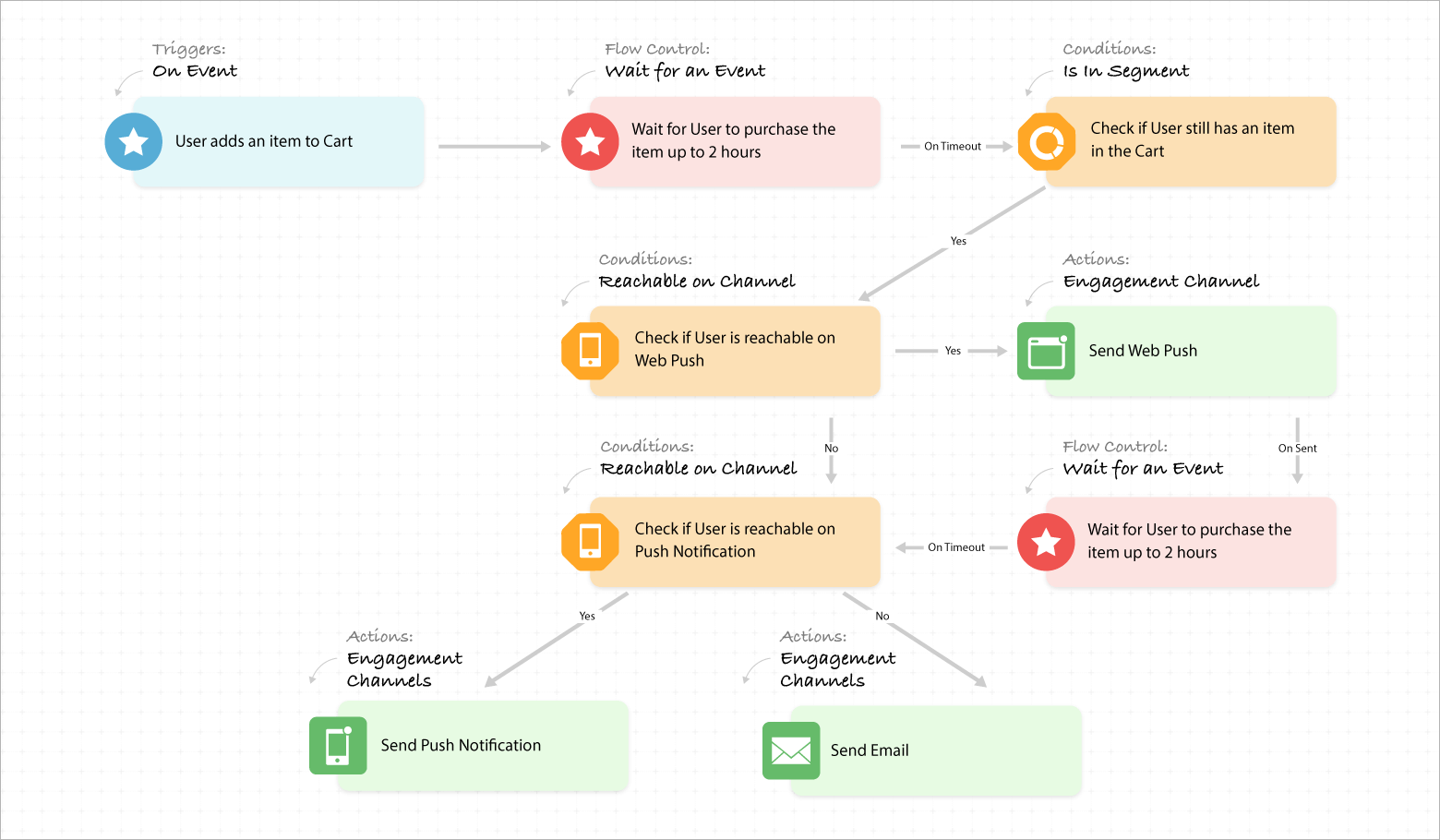
(You can know more about the Journey Designer elements here)
This journey can be divided into two phases: Verification and Engagement.
During the Verification Phase, the journey checks whether the user has made the purchase within a specified time (i.e. 2 hours) or not.

If not, the journey checks whether he/she still has an item in his/her cart or not. This is implemented by using Is In Segment condition. Here’s a sample segment for your reference:

Now during Engagement Phase, the journey checks whether the user is reachable on a particular engagement channel or not. If the user is, then he/she will be sent a Web Push (primary channel), Push Notification (secondary channel) and Email (tertiary channel) respectively.

These are the sample messages Alex (registered user of XYZ) will receive after he’ll satisfy all the criteria of the journey mentioned above:
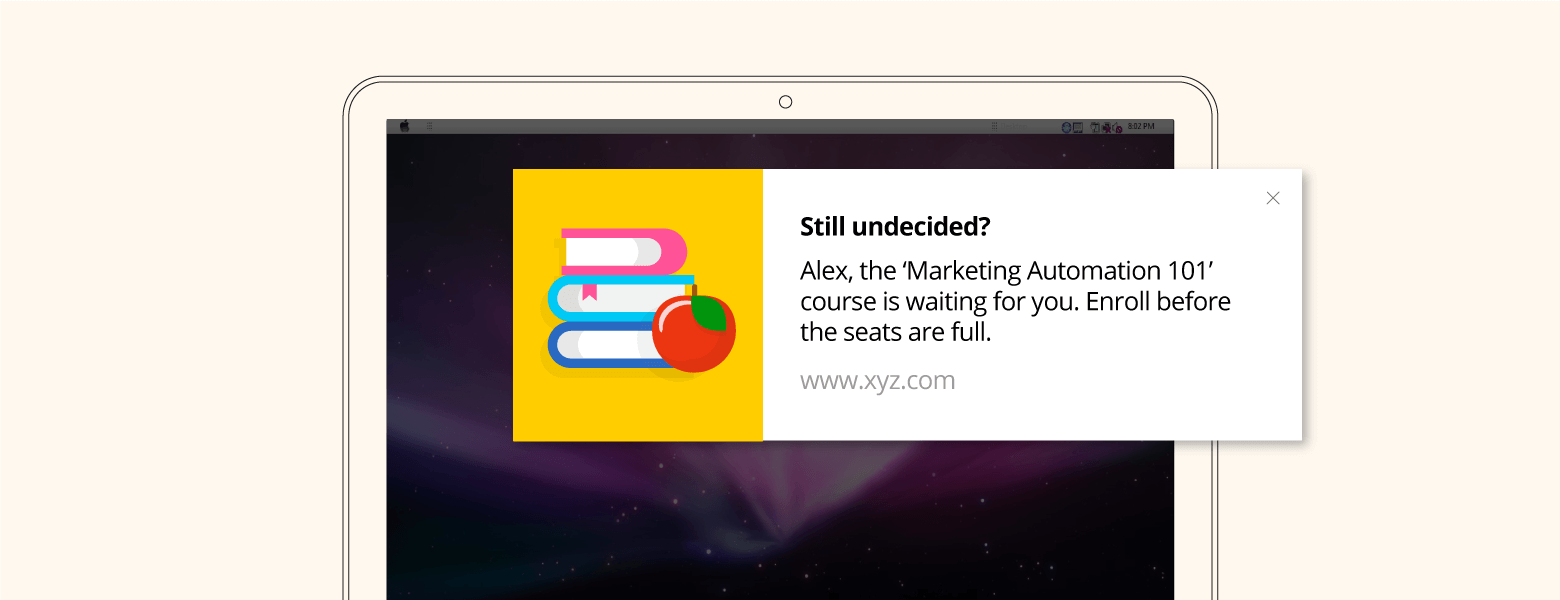

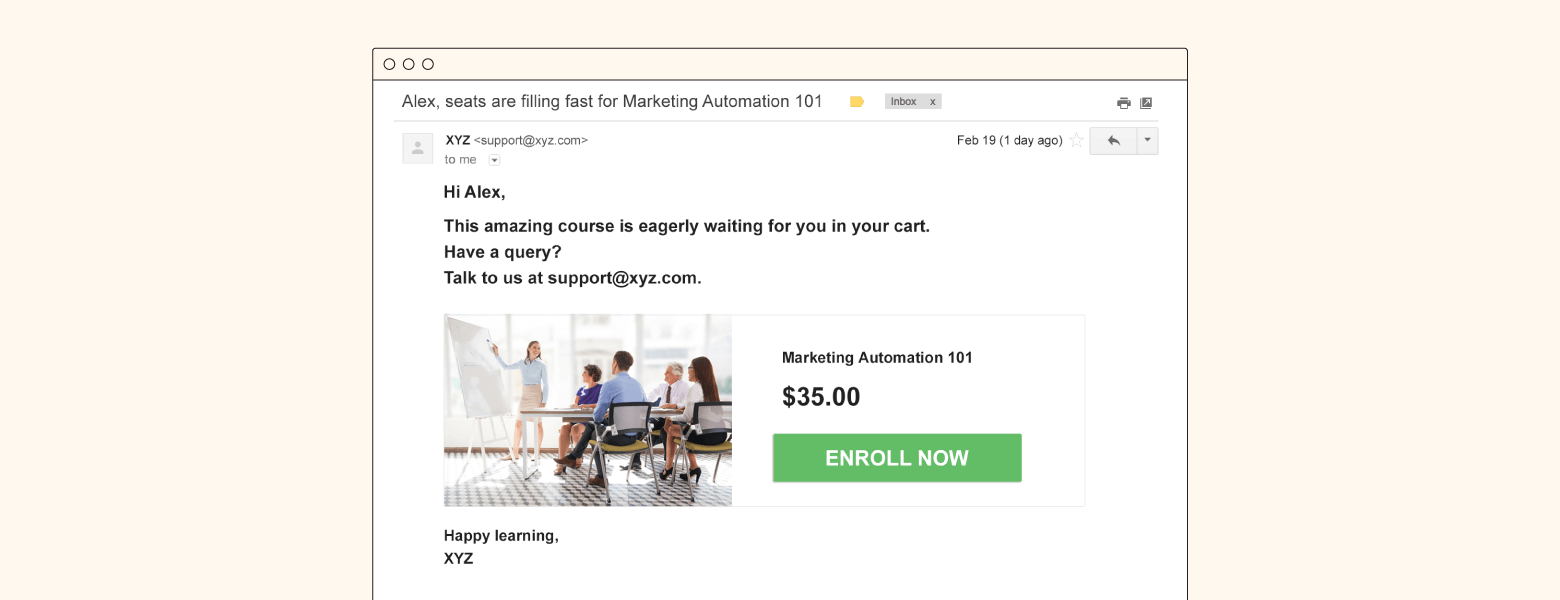
There’s so much you can achieve with customer journey mapping. To know more about WebEngage Journey Designer, check out this Blog Post or check out this Explainer Video. If you want to learn how this Journey Designer will compliment your B2C business, schedule a free demo now.
Bonus Read – 3 Major Reasons Behind Cart Abandonment





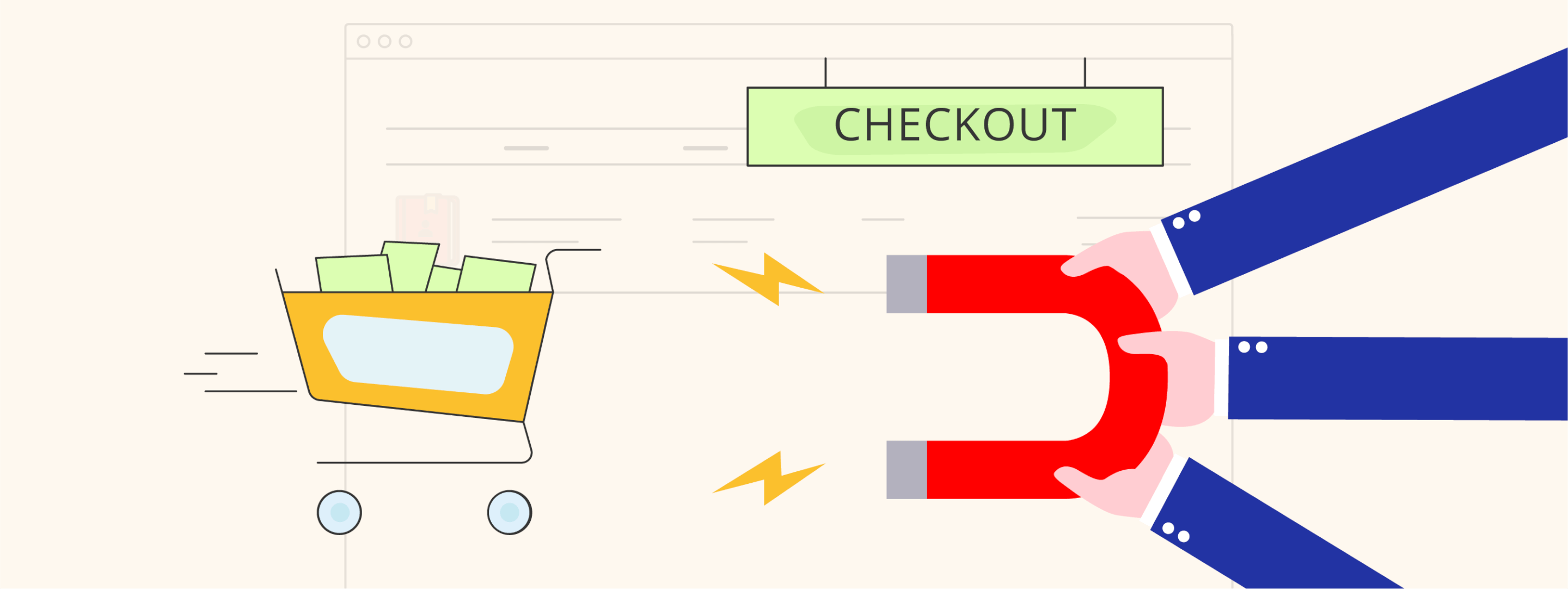

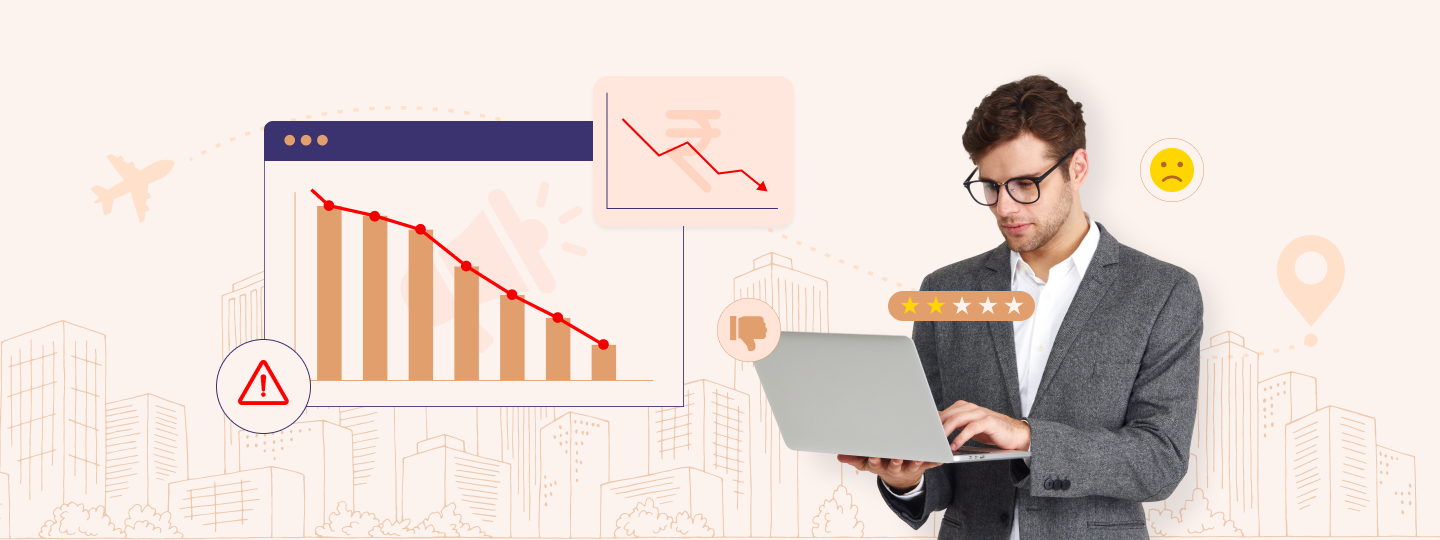
 Vanhishikha Bhargava
Vanhishikha Bhargava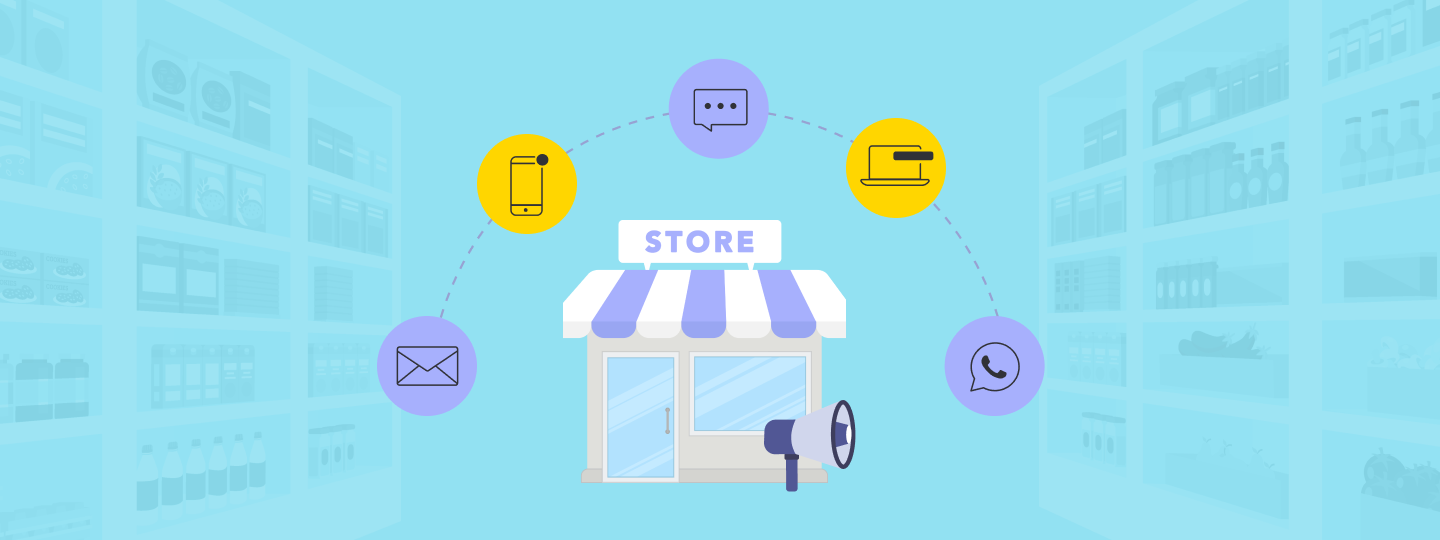
 Prakhya Nair
Prakhya Nair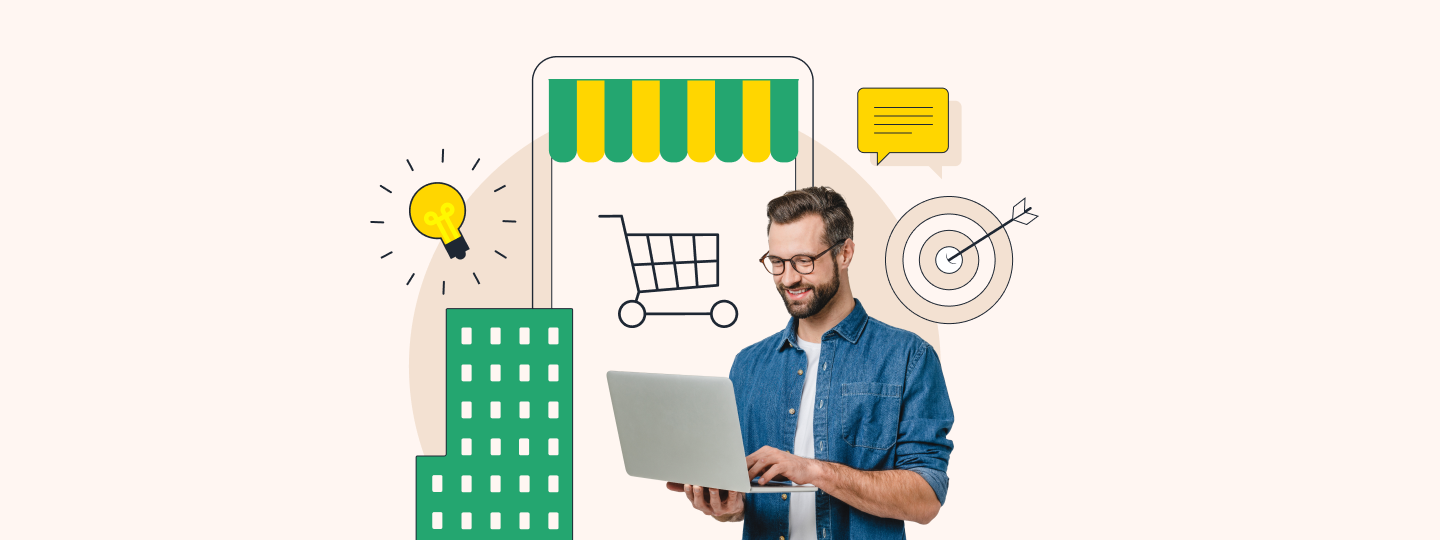
 Diksha Dwivedi
Diksha Dwivedi